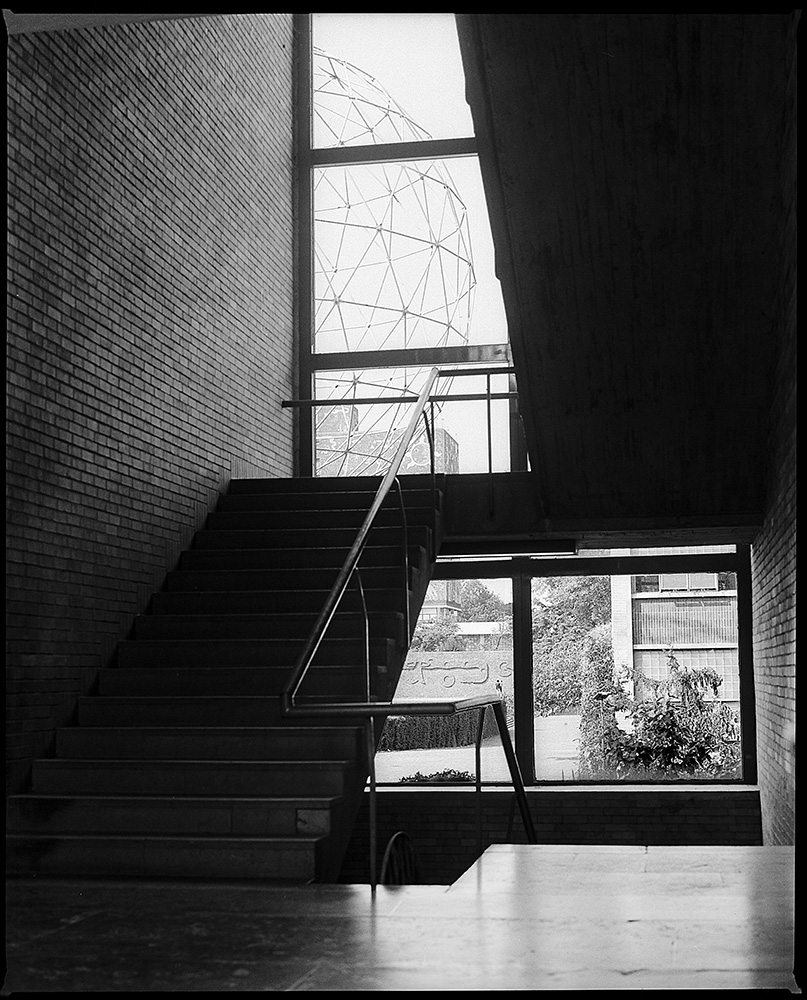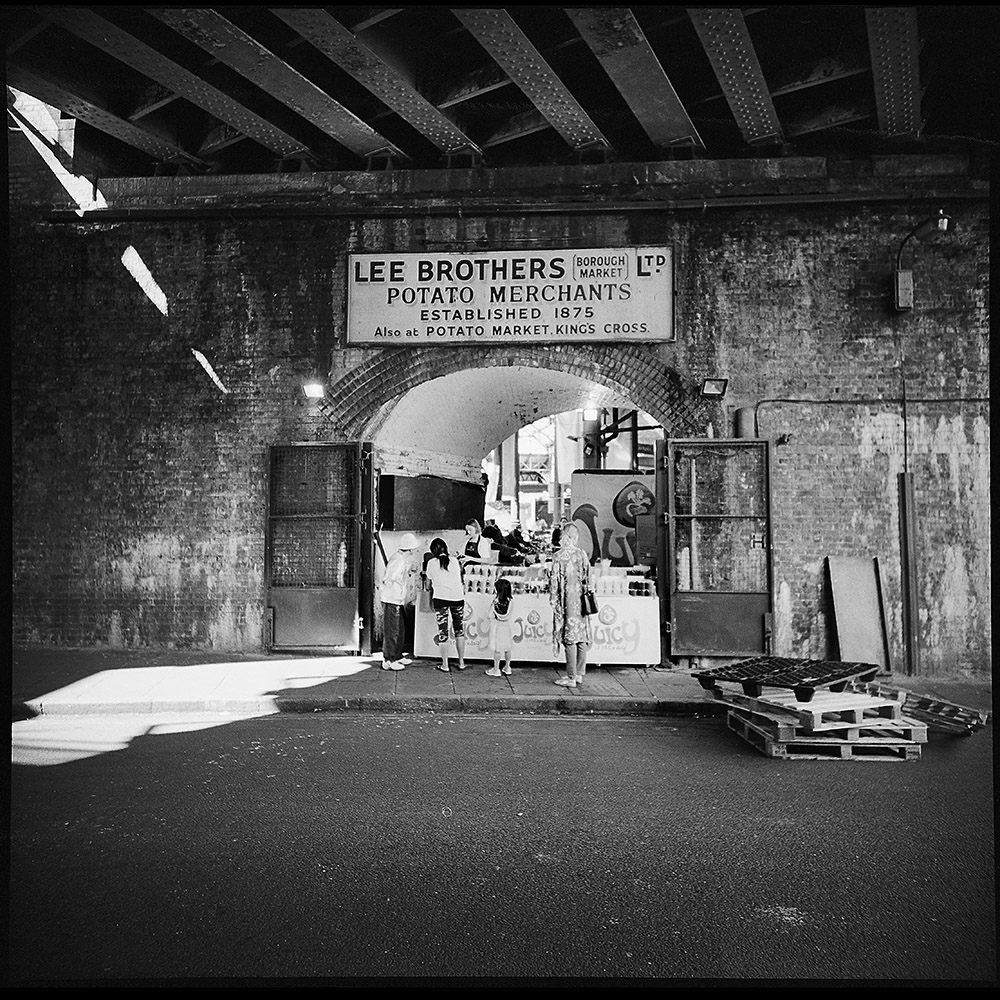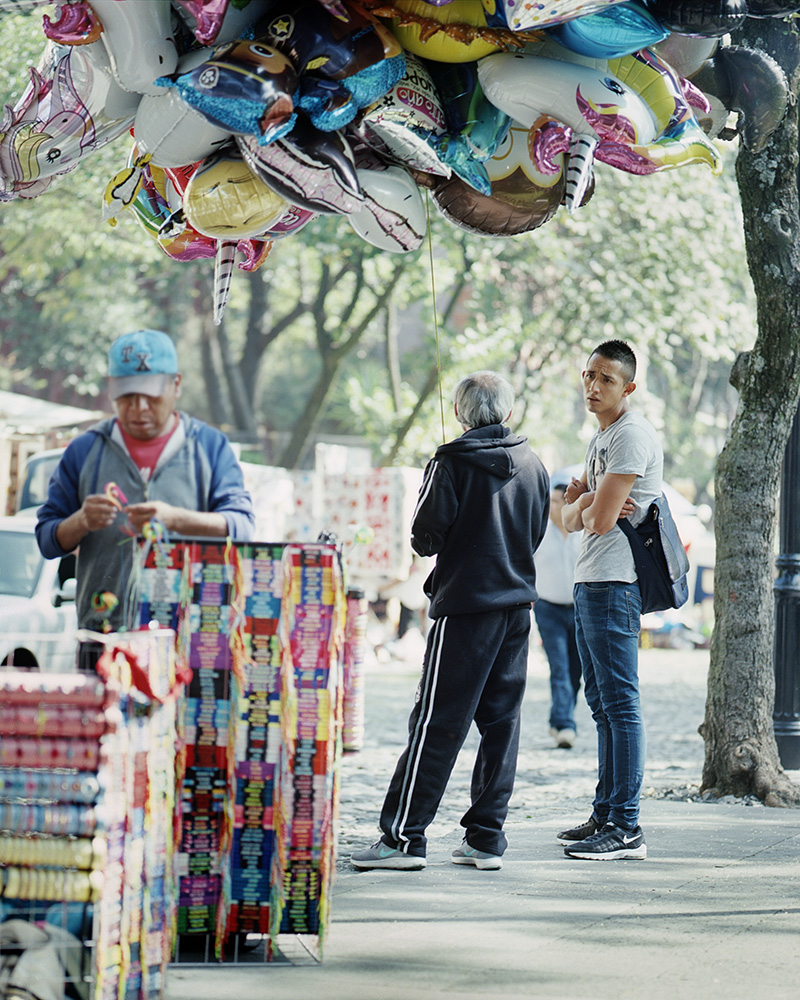This was a return trip, just a quick three-day weekend over the Veterans’ Day holiday, so I only shot four rolls of black-and-white and six rolls of color (to be processed today). Here are some highlights.
I took a trip to the UNAM (Autonomous National University of Mexico) campus, which is famous for its 1960s architecture (it’s the site of the 1968 Olympics, and the Olympic stadium which seats some 80,000 (if I recall correctly) is across Insurgentes Boulevard from the campus). My partner is in law school at UNAM, so we met up after class and wandered around a bit. These images are from the Architecture school buildings, another program that UNAM is famous for.


You may be wondering- what’s with the rectangular images? He almost always shows us square photos! Well, I traded in some gear I wasn’t using and got a Mamiya RZ67 and a trio of lenses for it. The RZ67 is effectively a Hasselblad on steroids – unlike my Rolleiflex, which is a TLR (Twin Lens Reflex), the RZ is an SLR (Single Lens Reflex). The advantage is that with an SLR, interchangeable lenses make a lot more sense, since you only have to have one of them per focal length. The RZ also shoots 6x7cm negatives on 120 film (NOT 120mm!!! Pet Peeve alert – 120 is the film size, not 120mm. 120 was a Kodak internal designation for the format that became universal, kind of like Kleenex). The RZ solves the problem of having to rotate the entire camera when switching from horizontal to vertical by instituting rotating backs. This of course makes the camera bigger and heavier. It’s an additional challenge when traveling, but I think the images speak for themselves.
Back in the city center, I was wandering around on the street where my hotel is located, Calle Londres. Down the block are a pair of markets – the Mercado del Angel, which specializes in antiques, and the Mercado de Artesanias which specializes in modern handicrafts of all varieties from wood carvings to ceramics to sterling silver jewelry. The Mercado de Artesanias had a Day of the Dead altar still up in their entryway.


You can’t tell it in black and white, but those pumpkins on the ground were fluorescent purple and pink. I like them better in b/w, don’t you?

Also on Calle Londres, these bronze doors can be found. I’m still not sure what they belong to, but they’re quite impressive.

Another aspect of the trip was to take in some of the exhibits of FotoMexico, a nation-wide, three month long photography festival that covers some 600 exhibits around the nation. The headquarters for the program is the Centro de la Imagén, located inside the Biblioteca México (I’ll have more to say about FotoMexico in another post). The Biblioteca México is located in an 18th century tobacco factory-cum-military facility that was used as a prison during the waning days of Spanish colonial rule. This monument is in the park in front of the Biblioteca, commemorating Jose Maria Morelos, a Mexican general who led a valiant 40 day resistance against colonial authorities at Cuautla, after which he was taken prisoner, held in the jail in the Ciutadela (now the Biblioteca) and then executed for treason.

The cart and broom of one of the caretakers of the park.

Another view of the Morelos monument. It was erected in 1912, as part of the centenary commemorations of Mexican independence from Spain, and coincidentally the Mexican Revolution of 1911 which overthrew the dictatorship of Porfirio Diaz.

Last but not least, the advertising billboard structure in the Glorieta Insurgentes. The Glorieta is a major traffic circle on Avenida Insurgentes Norte, and is a transportation hub – the subway and express buses have stops in and around the Glorieta. I photographed the billboard structure because it has a look to it reminiscent of a Bernd and Hilla Becher photograph of industrial structures.































